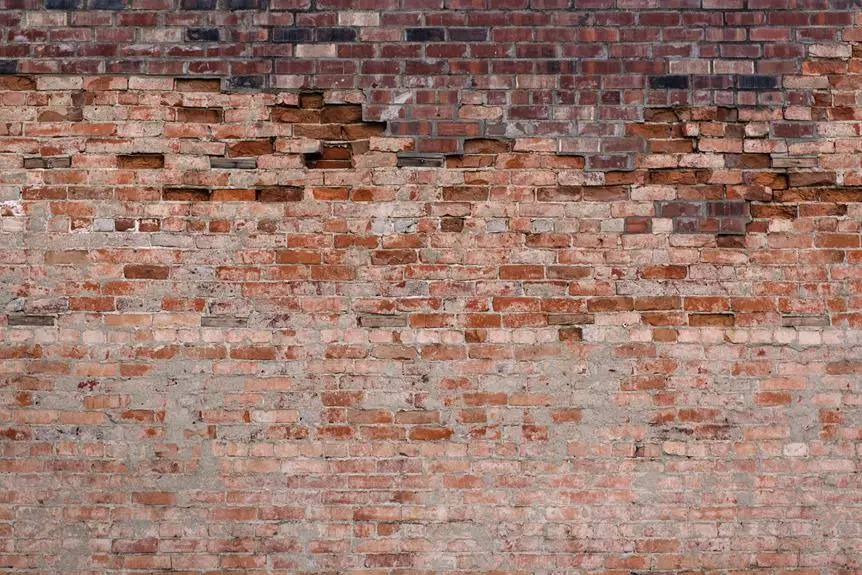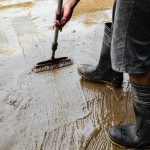If you're looking to bond fabric to a hard surface, using contact cement can be a reliable option. For instance, if you're crafting a custom upholstered headboard, contact cement can securely adhere fabric to the wood backing.
But can you use contact cement on fabric without causing damage or compromising the project's quality? This brief guide will provide you with the essential information you need to master the use of contact cement on fabric.
From suitable fabric types to application techniques and potential issues, you'll gain the expertise to achieve professional results in your fabric projects.
Key Takeaways
- Contact cement is suitable for cotton, denim, canvas, leather, and vinyl fabrics.
- Delicate fabrics like silk and satin may not be suitable for contact cement.
- Different types of adhesives may be more appropriate for delicate or lightweight fabrics.
- Preparation steps include cleaning the fabric, checking compatibility, cutting to size, and performing a test bond.
Types of Fabric Suitable for Contact Cement
Can you use contact cement on what types of fabric?
Contact cement is suitable for a wide range of fabric types, including cotton, denim, canvas, and some types of leather and vinyl. However, it's important to consider the limitations of contact cement when working with certain fabrics.
For example, it may not be suitable for delicate fabrics such as silk or satin, as the strong adhesive properties could damage the material. When selecting an adhesive for fabric projects, it's crucial to consider the specific characteristics of the fabric and the requirements of the project.
Contact cement is known for its strong and durable bond, making it ideal for heavy-duty fabrics and projects that require a lasting hold. However, for more delicate or lightweight fabrics, a different type of adhesive may be more appropriate.
Understanding the fabric types and their compatibility with contact cement is essential for achieving successful and long-lasting results in fabric bonding projects.
Preparation Steps for Using Contact Cement on Fabric
To prepare for using contact cement on fabric, gather all the necessary materials and ensure a clean and smooth work surface. Here are the steps to prepare fabric for contact cement:
- Fabric preparation: Start by prepping the fabric you intend to bond. Ensure it's clean, free from any dirt, grease, or other contaminants that could interfere with the adhesive bond.
- Adhesive compatibility: Check the compatibility of the contact cement with the fabric. Not all fabrics are suitable for use with contact cement, so it's essential to ensure that the adhesive will effectively bond with the specific type of fabric you're using.
- Cutting and sizing: Cut the fabric to the desired size and shape before applying the contact cement. This will make the bonding process more manageable and ensure that the fabric adheres precisely where you want it to.
- Ventilation: Work in a well-ventilated area when applying contact cement to fabric. The fumes from contact cement can be strong, so proper ventilation is crucial for your health and safety.
- Test bond: Before applying the contact cement to the entire fabric, perform a test bond on a small, inconspicuous area to ensure the adhesive works effectively with the fabric.
Following these preparation steps will help ensure a successful application of contact cement on fabric.
Application Techniques for Contact Cement on Fabric
Once you have prepared the fabric for contact cement, carefully apply the adhesive using a smooth and even technique to ensure proper bonding. Here are some application techniques to help you achieve the best results:
| Application Techniques | Description |
|---|---|
| Brush or Roller | Use a brush or roller to apply the contact cement evenly on both the fabric and the surface to be bonded. This method ensures good coverage and helps prevent lumps or uneven adhesive distribution. |
| Allow for Open Time | After applying the adhesive, allow for the recommended open time before joining the fabric and the surface together. This ensures that the adhesive is tacky enough for a strong bond. |
| Pressing and Rolling | Once the fabric is positioned on the surface, use a roller or apply pressure with your hands to ensure firm contact and bonding. This step helps to remove air bubbles and ensures maximum fabric bonding. |
Potential Issues When Using Contact Cement on Fabric
When using contact cement on fabric, it's important to consider the compatibility of the fabric with the adhesive. Potential issues such as damage to the fabric should be carefully considered before using contact cement.
Additionally, application techniques and tips can help ensure a successful bond without damaging the fabric.
Fabric Compatibility With Cement
You can use contact cement on fabric, but it's important to be aware of potential compatibility issues and issues that can arise when doing so. When considering fabric compatibility with cement, it's crucial to pay attention to the following:
- Fabric adhesion and durability can vary depending on the type of fabric and the specific contact cement being used.
- Chemical compatibility between the fabric and the contact cement is essential to ensure a strong and lasting bond.
- Safety considerations are important, as some contact cements may contain chemicals that could potentially harm certain types of fabric.
- Understanding the porosity of the fabric is crucial, as more porous fabrics may require different application techniques for optimal adhesion.
- Testing a small, inconspicuous area first is recommended to assess the compatibility and potential impact on the fabric's appearance and integrity.
Application Technique and Tips
Understanding the potential issues when using contact cement on fabric is crucial, as it can help you achieve a successful application and avoid common pitfalls. When working with contact cement on fabric, it's essential to follow the best practices to ensure a strong and durable bond. Here are some tips for the application process:
| Common Issues | Best Practices |
|---|---|
| Sticky Residue | Ensure the surfaces are clean and free from any dust or debris before applying the contact cement. |
| Uneven Adhesion | Apply an even coat of contact cement on both the fabric and the substrate, and allow it to dry according to the manufacturer's instructions. |
| Wrinkling of Fabric | Smooth out the fabric carefully to prevent any wrinkles or air bubbles before pressing it onto the substrate. |
Potential Damage to Fabric
Potential damage to fabric from using contact cement can occur if the proper application techniques aren't followed. When using contact cement on fabric, there are potential risks to be aware of, including:
- Staining or discoloration of the fabric if excess adhesive seeps through.
- Weakening of the fabric fibers due to the chemical composition of the contact cement.
- Potential for the fabric to become stiff or rigid after application.
- Damage to the fabric if exposed to excessive heat during the drying process.
- Adverse effects on the fabric if the work area lacks proper ventilation, leading to prolonged exposure to fumes.
It is crucial to be mindful of these potential issues when using contact cement on fabric and to ensure that the application process is conducted in a well-ventilated area to mitigate the risks.
Alternatives to Contact Cement for Fabric Projects
When looking for alternatives to contact cement for fabric projects, consider using fabric-friendly adhesives or sewing and fabric glue. These options provide a secure hold while being gentle on fabrics, making them ideal for various fabric crafting projects.
Fabric-Friendly Adhesives
You can consider using fabric-friendly adhesives as alternatives to contact cement for your fabric projects. When choosing a fabric adhesive, look for options specifically designed for bonding fabric. Some alternatives to contact cement for fabric projects include:
- Fabric glue: Specially formulated for fabric, providing a strong and flexible bond.
- Fusible web: A thin adhesive web that can be ironed between fabrics to create a permanent bond.
- Spray adhesive: Allows for even application on large fabric surfaces, providing a temporary or permanent bond.
- Double-sided fabric tape: Ideal for quick fixes and temporary bonding without the need for sewing.
- Liquid stitch: Offers a permanent and machine washable bond without the need for sewing or heat.
These fabric-friendly adhesives provide versatile options for various fabric projects, ensuring a reliable and durable bond.
Sewing or Fabric Glue
Consider using fabric glue as a versatile alternative to contact cement for your fabric projects. Fabric glue offers a convenient solution for adhering fabric without the mess and fumes associated with contact cement.
It's specifically designed for fabric, making it an excellent choice for a wide range of sewing techniques. When selecting a fabric glue, look for options that offer strong bonds and fabric durability. Some fabric glues are even machine washable, providing long-lasting results for your projects.
Additionally, fabric glue is ideal for delicate fabrics that may be damaged by contact cement. With its ease of use and reliable performance, fabric glue is a valuable tool for any fabric project, offering a seamless alternative to traditional adhesives.
Tips for Achieving Strong Bonds With Contact Cement on Fabric
Achieving a strong bond with contact cement on fabric requires thorough cleaning and preparation of the surfaces. To ensure the best results, follow these tips:
- Surface Preparation: Clean the fabric and the surface it will be bonded to with a degreaser to remove any dirt, oil, or residue that could interfere with the bond.
- Even Application: Apply the contact cement evenly to both the fabric and the surface. Uneven application can result in weak spots in the bond.
- Pressure and Time: Once the cement is applied, firmly press the fabric and surface together. Allow the bond to set for the recommended time to ensure maximum strength.
- Temperature Consideration: Be mindful of the temperature when applying contact cement. Warmer temperatures can help improve the bond strength.
- Testing: Always test a small area first to ensure the bond strength and flexibility meet your requirements before applying the contact cement to the entire project.
Safety Precautions When Using Contact Cement on Fabric
When using contact cement on fabric, prioritizing safety precautions is essential to prevent potential hazards during the bonding process. Proper ventilation and handling are crucial to ensure a safe working environment. It is important to work in a well-ventilated area to avoid inhaling harmful fumes. Additionally, wearing safety equipment such as gloves and a mask can protect you from direct contact with the adhesive and inhalation of fumes. Here are some safety precautions to consider when using contact cement on fabric:
| Safety Precautions | Description |
|---|---|
| Proper Ventilation | Work in a well-ventilated area to avoid inhaling fumes |
| Handling | Use gloves and a mask to prevent direct contact |
| Safety Equipment | Wear protective gear to minimize exposure |
| Precautions | Follow manufacturer's guidelines for safe usage |
Frequently Asked Questions
Can Contact Cement Be Used on Delicate or Sheer Fabrics?
Yes, you can use contact cement on delicate or sheer fabrics. It offers strong adhesion and is suitable for fabric compatibility. Apply it with a thin layer and ensure proper ventilation for best results.
How Long Does It Take for Contact Cement to Fully Cure on Fabric?
To ensure proper bonding time and fabric durability, apply contact cement in a thin, even layer. The drying time may vary, but typically it takes 15-30 minutes to set and 24 hours to fully cure on fabric.
Can Contact Cement Be Used to Bond Fabric to Non-Fabric Materials Such as Wood or Metal?
Yes, contact cement can bond fabric to non-fabric materials like wood or metal. Ensure fabric compatibility, apply a thin, even coat of cement, and press the materials together firmly. Alternatives include fabric glue or sewing. Use in a well-ventilated area and follow safety precautions.
Is It Possible to Remove Contact Cement From Fabric if a Mistake Is Made During Application?
To ensure fabric care and easy removal, apply contact cement carefully. If a mistake occurs, act quickly using a removal process suitable for fabric. Prevention tips include precise application and using protective measures to avoid mishaps.
Are There Any Specific Care Instructions for Fabric Items Bonded With Contact Cement?
When fabric bonding with contact cement, follow best practices for application. Once bonded, fabric items are durable. To maintain, avoid washing in hot water and dry cleaning, and gently hand wash if needed.
- Where to Buy Sherpa Suede Fabric - July 12, 2025
- How to Draw or Illustrate the Texture of Suede Fabric - July 12, 2025
- What Is Baseball Suede Leather Fabric? - July 12, 2025







